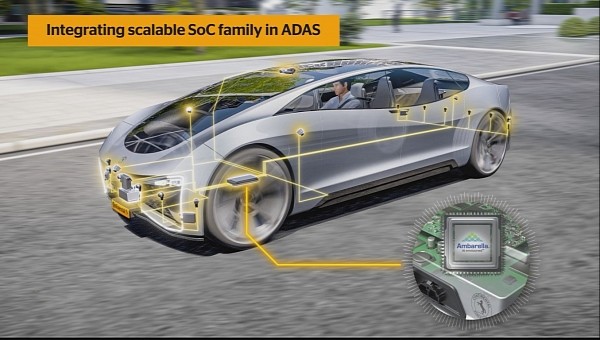Car manufacturers are moving steadily towards sustainability and autonomous driving. This is no easy feat, as you can expect, but advancements in technology are nothing short of extraordinary. Now, Continental formed a strategic partnership with Ambarella toward this goal, and their mission is really exciting.
This sustainable and autonomous future is unavoidable. Regardless of how you feel about this change in the automotive industry, the technology will bring a lot of exciting things to the table.
Cars will be safer, and transportation as a whole will be more efficient. Development in this area is moving at a fast pace, especially when big names get involved, like Continental and Ambarella.
The partnership between the two will target the development of full-stack systems for Level 2+ autonomous driving and all the way up to highly autonomated vehicles. This goal will be achieved by using and improving Continental’s already advanced hardware and software systems.
Making this whole process more efficient is where Ambarella steps in. They are a semiconductor design company that specializes in the creation of more efficient and high-quality video compression, image processing, and computer vision processors, so you can see why they are the perfect match for Continental in this development.
Ambarella will provide a highly efficient system-on-chip family that is 40 times faster than the old semiconductor chips while consuming way less power. Specifically, they will be used to enhance Continental’s high-resolution cameras, radars, lidars, and ultrasonics with their adjacent software.
So, in plain terms, how will this work? Well, this will result in a significantly improved ability to collect more data and process it faster, thus giving way to a more advanced and vast range of functions needed for the development of better autonomous driving.
Now, what does this mean in the real world? The answer is pretty straightforward: cars and transportation in general will manage to achieve the end goal of safety and efficiency in a shorter time.
The time frame of this project is to provide these solutions to the global market by 2026. And judging by the way things are moving right now, this isn’t far-fetched at all.
This is the future of mobility, and at first glance, it seems to be miles away. But when you take a look at the number of big companies working together and the massive leaps they are making, this greener and safer future start to feel closer and closer.
While old-school, die-hard petrol heads might see this as the death of an era, we should look at it from the perspective of sustainability. Our gas-guzzling, traditional cars are on their way out. While that is sad to some degree, you would be hard-pressed to say that a safer and greener future isn’t exciting.
.
Cars will be safer, and transportation as a whole will be more efficient. Development in this area is moving at a fast pace, especially when big names get involved, like Continental and Ambarella.
The partnership between the two will target the development of full-stack systems for Level 2+ autonomous driving and all the way up to highly autonomated vehicles. This goal will be achieved by using and improving Continental’s already advanced hardware and software systems.
Making this whole process more efficient is where Ambarella steps in. They are a semiconductor design company that specializes in the creation of more efficient and high-quality video compression, image processing, and computer vision processors, so you can see why they are the perfect match for Continental in this development.
Ambarella will provide a highly efficient system-on-chip family that is 40 times faster than the old semiconductor chips while consuming way less power. Specifically, they will be used to enhance Continental’s high-resolution cameras, radars, lidars, and ultrasonics with their adjacent software.
So, in plain terms, how will this work? Well, this will result in a significantly improved ability to collect more data and process it faster, thus giving way to a more advanced and vast range of functions needed for the development of better autonomous driving.
Now, what does this mean in the real world? The answer is pretty straightforward: cars and transportation in general will manage to achieve the end goal of safety and efficiency in a shorter time.
The time frame of this project is to provide these solutions to the global market by 2026. And judging by the way things are moving right now, this isn’t far-fetched at all.
This is the future of mobility, and at first glance, it seems to be miles away. But when you take a look at the number of big companies working together and the massive leaps they are making, this greener and safer future start to feel closer and closer.
While old-school, die-hard petrol heads might see this as the death of an era, we should look at it from the perspective of sustainability. Our gas-guzzling, traditional cars are on their way out. While that is sad to some degree, you would be hard-pressed to say that a safer and greener future isn’t exciting.
.






